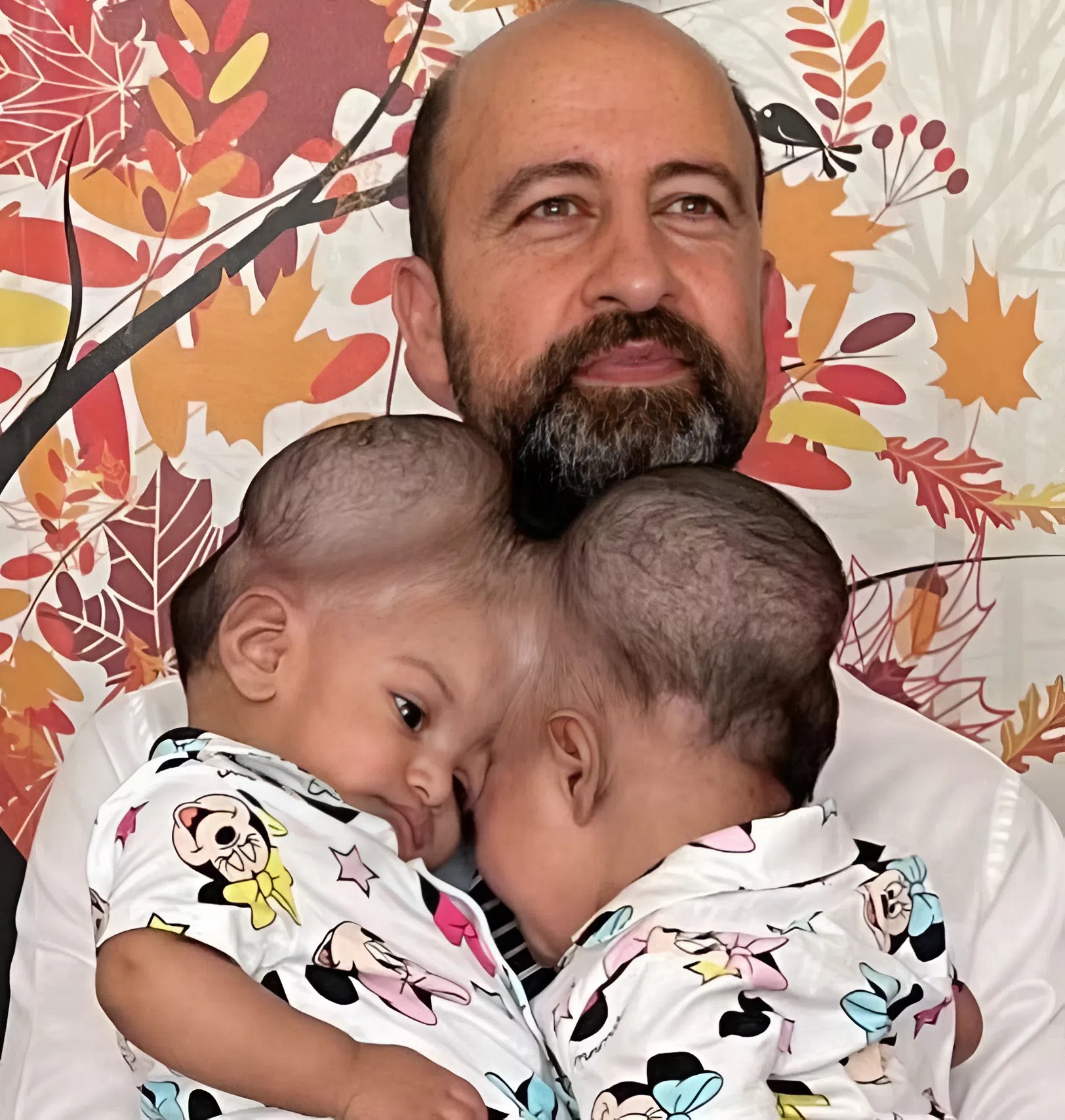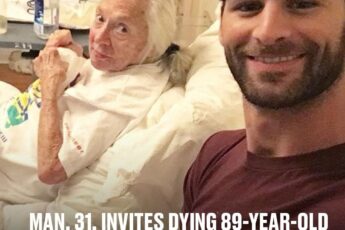When Manal and Mirhi were born in Pakistan, their arrival into the world was both joyous and heartbreaking. Like any parents, theirs were filled with dreams of watching their daughters grow, play, and laugh. But from the very beginning, it was clear that their path would be unlike most. The girls were born with their heads fused together—a condition so rare that it occurs in only about one out of every 60,000 births, and even then, many children with this diagnosis do not survive long enough for doctors to attempt a separation.
The sisters shared not only a cranial bone but also a network of blood vessels. For their parents, it was an overwhelming reality: on the one hand, the miracle of life, and on the other, the uncertainty of whether their daughters would live to see their childhood. Every cry, every smile, every moment was precious, shadowed by the knowledge that something as simple as a fever could become life-threatening.
Doctors explained early on that surgery might one day be possible, but the risks were enormous. Operating on conjoined twins of this type requires not only immense skill but also resources, time, and technology. For years, the family lived with a mixture of hope and fear. Relatives and neighbors tried to support them, but questions were always there: Would the girls ever be able to live separately? Would they have a chance at a normal life?
When Manal and Mirhi turned three, their parents were faced with a choice that no parent can prepare for. The girls had grown stronger, learned to communicate in their own way, and even developed little habits that revealed their distinct personalities. But their shared condition also limited them severely. They could not lie comfortably in different directions, could not move freely, and every illness posed a double risk. Together with a team of specialists, the parents made the decision that changed everything: they would attempt the separation.
The journey led them far from home to Ankara, Turkey, to Bilkent City Hospital, a place known for cutting-edge medicine and international cooperation. The medical team that gathered around the twins was diverse—surgeons, neurologists, anesthesiologists, radiologists, and rehabilitation experts from different countries. Each one knew the magnitude of the task. Such operations are among the most delicate in the world, requiring not just skill but months of preparation.
The preparation itself was a story of human ingenuity. Using mixed reality technology, doctors created three-dimensional models of the girls’ skulls and brains. With these models, surgeons could practice the operation again and again, refining every move, anticipating complications, and preparing for the moment when there would be no second chance. For the parents, watching this process was both reassuring and terrifying. They saw the extraordinary dedication of the team, but they also understood how fine the line was between success and tragedy.
When the day of surgery came, the hospital corridors were filled with tension. The procedure was carried out in two stages, with the final one lasting more than 14 hours. Imagine the concentration required: every millimeter of progress could mean the difference between life and death, between two independent lives or a heartbreaking loss. The surgeons had to carefully separate the delicate meninges and the shared vascular system before reconstructing each girl’s skull with painstaking precision.
For the parents, the hours felt endless. They waited, prayed, and held each other, knowing that the fate of both daughters lay in the hands of strangers who, by then, had become something more—saviors. Finally, the news came: the operation was successful. Both Manal and Mirhi had survived the separation. For the first time, the world could say their names not as one, but as two.
The days that followed were filled with small miracles. At first, the girls were fragile, surrounded by tubes and machines. But then, slowly, they began to breathe on their own. Their eyes opened, they reacted to voices, and they started to explore the world separately for the very first time. Doctors were astonished by the speed of their recovery. What they had expected to take months was happening in weeks.
Today, the sisters are undergoing rehabilitation, learning to sit, to move, and eventually to walk on their own. It is not an easy process; their bodies must adjust to the changes, and they need constant therapy and support. But every small achievement—lifting a toy, turning their heads independently, smiling in different directions—feels monumental.
For their parents, the greatest joy is something most take for granted: the ability to hug each daughter individually. To feel the small body of Manal in one arm, and then Mirhi in the other. To whisper into their ears separately, to watch them develop their own identities and preferences.
Stories like theirs remind us of the resilience of the human spirit and the power of modern medicine. They also show how international collaboration and technology can make what once seemed impossible a reality. A family in Pakistan, two little girls who faced unimaginable odds, and a team of doctors in Turkey—all came together to prove that miracles are possible when determination, love, and science unite.
And now, as Manal and Mirhi continue to grow, they are symbols of hope not only for their parents but for countless families around the world who face rare and daunting medical challenges. Their laughter, their curiosity, and their very existence testify that even the most difficult beginnings can lead to beautiful new chapters.
Curious how the sisters look now? Their first photographs after the separation showed two radiant little girls with wide, curious eyes—no longer bound together by bone and blood, but still inseparable in spirit. Their journey is just beginning, and the world watches with admiration, rooting for them as they take their first steps into life, finally free to be themselves.










